
table of contents
- List of the top 15 vegetables
- 1st to 5th place
- 6th to 10th place
- 11th to 15th place
- frequently asked Questions
It is a truism that vegetables are good for the body. But which vegetable is the healthiest? Various studies have investigated this question. Our list includes the 15 healthiest vegetables in the world.
In a nutshell
- healthiest vegetables researched in various studies
- Density of essential nutrients is decisive
- World lists, some with surprising results
- Chinese cabbage in 1st place
List of the top 15 vegetables
Our listing ranks the healthiest vegetables in the world based on their nutrient density.
1st to 5th place
1. Chinese cabbage (Brassica rapa subsp. pekinensis)
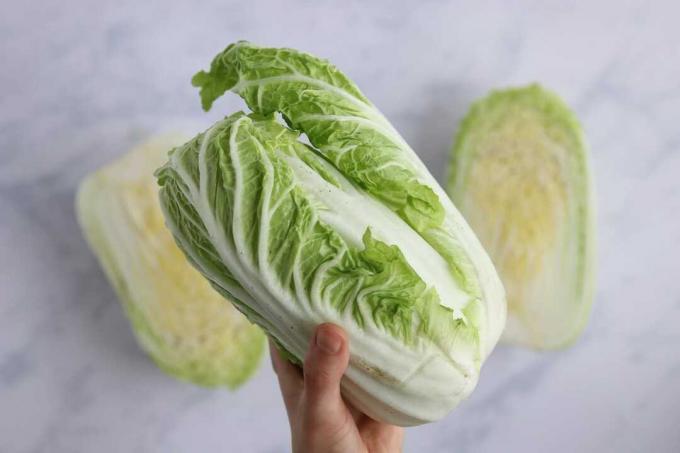
| ingredients | Attributed Effect |
|---|---|
| - Vitamin C - B vitamins - vitamin K - calcium - potassium - folic acid - mustard glycosides (phytochemicals) |
- antibacterial - strengthens the immune system - good for nerves, skin and hair - lowering cholesterol - stimulating and digestive |
2. Swiss chard (Beta vulgaris subsp. vulgaris)

| ingredients | Attributed Effect |
|---|---|
| - vitamin K - Vitamin A - Vitamin C - Vitamin B - sodium - magnesium - potassium - calcium - iron - phosphorus - folic acid - iodine - carotenes (phytochemicals) |
- promotes mental and physical freshness - strengthens the immune system - helps with colds - Protection of the mucous membranes - has a calming effect - Helps with concentration disorders, indigestion (detoxifying) and various other digestive disorders |
Note: Because the vegetables are also high in content Oxalic acid kidney patients should refrain from consuming it.
3. Spinach (Spinacia oleracea)

| ingredients | Attributed Effect |
|---|---|
| - Vitamin A - B vitamins - Vitamin C - vitamin E. - folic acid - magnesium - calcium - potassium - zinc |
- Strengthening the immune system |
Note: The iron content of spinach is not as high as was previously assumed. Nevertheless, the amount contained (3.5 milligrams / 100 grams) is still considered above average for a vegetable today.
4. Chicory (Cichorium intybus var. foliosum)
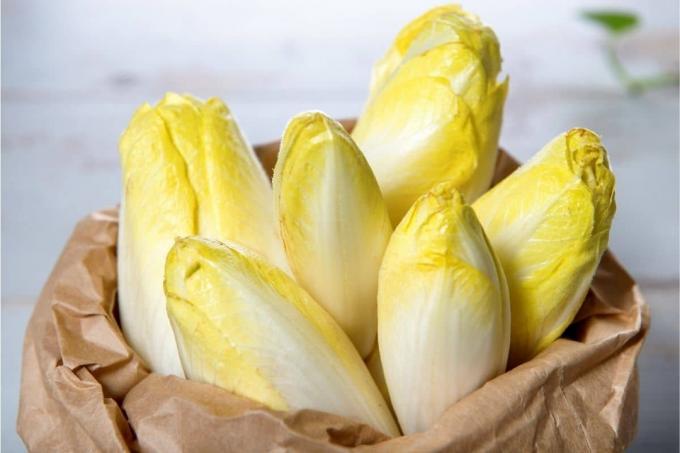
| ingredients | Attributed Effect |
|---|---|
| - Vitamin A - Vitamin B - Vitamin C - potassium - calcium - phosphorus - magnesium - inulin (prebiotic fiber) - Lactucopicrin (bitter substance) |
- positive effect on stomach and intestinal flora - lowering blood sugar - pain reliever - Stimulation of the bile and pancreas - lowering cholesterol (LDL cholesterol) - Anti-aging vegetables - diuretic |
5. Lettuce / lettuce (Lactuca sativa var. capitata)
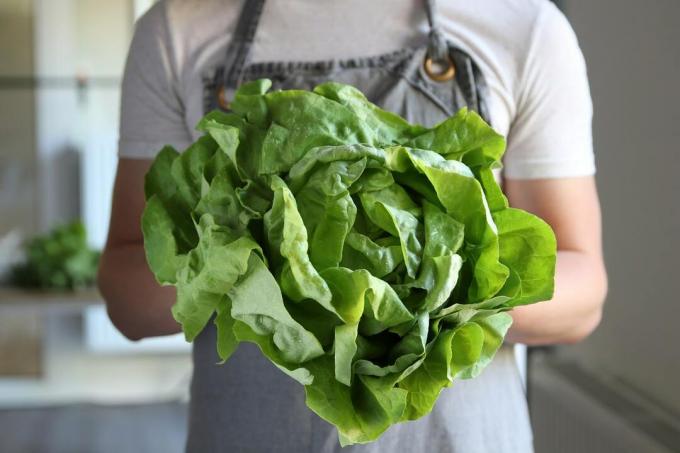
| ingredients | Attributed Effect |
|---|---|
| - Vitamin A - potassium - calcium - phosphorus - magnesium - sodium - iron |
- supports the development of a healthy intestinal flora - contributes to the regulation of bowel activity - prevents blockages |
6th to 10th place
6. Romaine lettuce (Lactuca sativa var. longifolia)
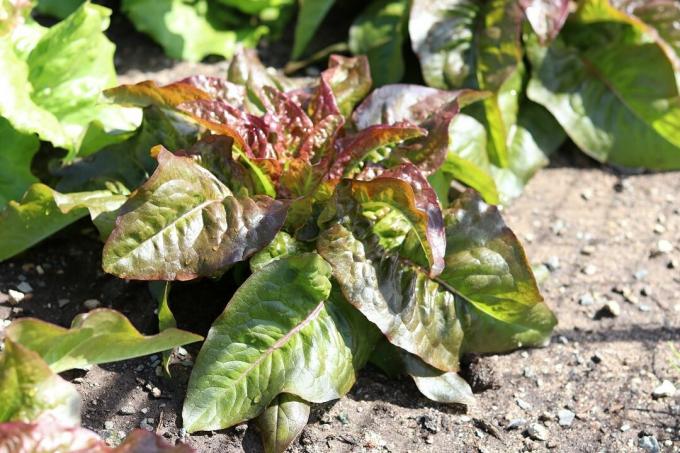
| ingredients | Attributed Effect |
|---|---|
| - Vitamin C - B vitamins - provitamin A - sodium - potassium - calcium - Carotenoids, flavonoids, phytosterols and polyphenols (secondary plant substances) |
- Prophylaxis against cardiovascular diseases - protects against high blood pressure and arteriosclerosis - reduces the risk of developing type 2 diabetes |
7. Endive (Cichorium endivia)
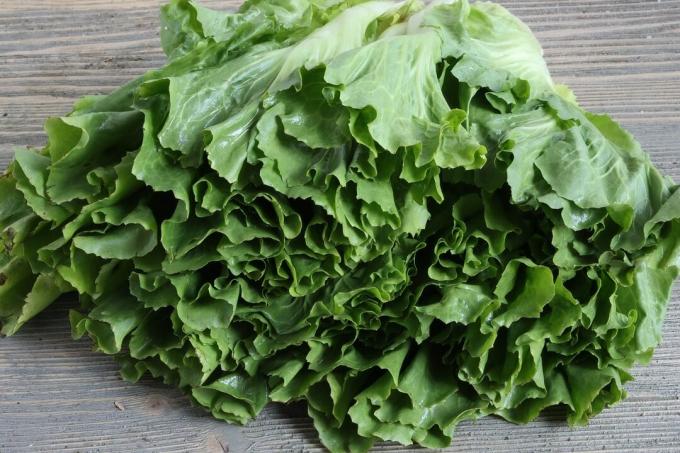
| ingredients | Attributed Effect |
|---|---|
| - B vitamins - Vitamin C - vitamin E. - beta carotene - iron - folic acid - potassium - calcium - phosphorus - Lactucopicrin (bitter substance) - Flavonoids (secondary plant substances) |
- Stimulation of the flow of bile - slightly diuretic, analgesic and calming - beneficial effect on kidney function - positive influence on digestion (increase in stool frequency) - Strengthening the immune system, eyesight, respiratory tract and skin |
8. Kale (Brassica oleracea var. sabellica)
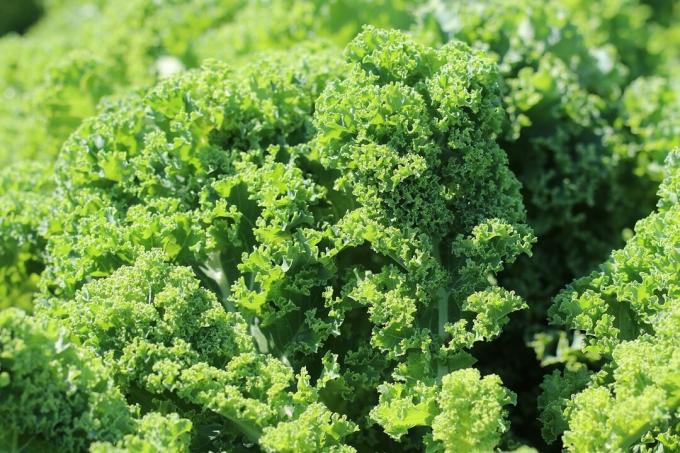
| ingredients | Attributed Effect |
|---|---|
| - Vitamin C - vitamin K - carotenoids - calcium - potassium - magnesium - iron - folic acid - Omega-3 fatty acids - Flavonoids (secondary plant substances) |
- Prevention of old age diseases (e. E.g.: cataracts) - Defense against infection - lowering blood lipids - positive effect on the cardiovascular system - anti-inflammatory - antioxidant |
9. Rocket (Eruca sativa)

| ingredients | Attributed Effect |
|---|---|
| - B vitamins - Vitamin C - vitamin E. - iodine - iron - zinc - magnesium - potassium - calcium - folic acid - mustard oils (glucosinolates) |
- anti-inflammatory - light, natural antibiotic - appetizing - preventive against dementia and cardiovascular diseases |
10. Broccoli (Brassica oleracea var. italica)

| ingredients | Attributed Effect |
|---|---|
| - provitamin A - B vitamins - Vitamin C - vitamin E. - iron - potassium - calcium - phosphorus - zinc - sodium - carotenoids - Glucosinolates (especially sulforaphane) and flavonoids (secondary plant substances) |
- strengthens the ability to concentrate and the immune system - Anti-aging vegetables - Preventive and relieving osteoarthritis - supports eyesight |
11th to 15th place
11. Pumpkin (cucurbita)
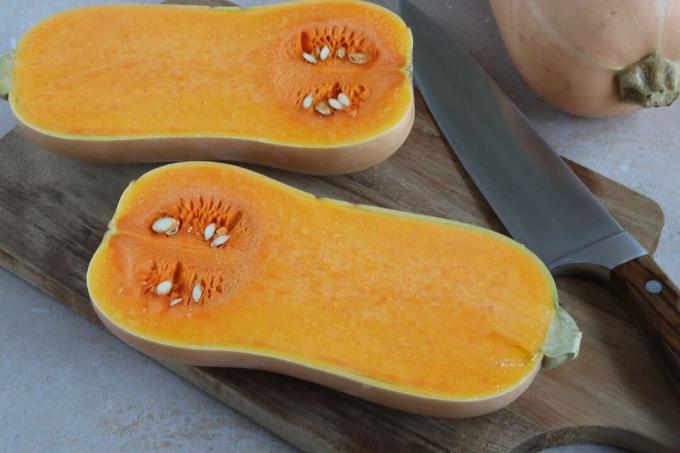
| ingredients | Attributed Effect |
|---|---|
| - B vitamins - Vitamin C - vitamin E. - folic acid - iron - potassium - magnesium - phosphorus - beta carotene - potassium |
- Promotes health of the skin, eyes and mucous membranes - diuretic - supports the healing of urinary tract problems |
12. Brussels sprouts (Brassica oleracea var. gemmifera)

| ingredients | Attributed Effect |
|---|---|
| - Vitamin C - Vitamin A - B vitamins - vitamin K - iron - potassium - magnesium - zinc - Glucosinolates (secondary plant substances) |
- strengthens the immune system - has a balancing effect on the nervous system - inhibits the reproduction of bacteria, viruses and fungi - stimulates blood circulation - antioxidant - promotes digestion |
Note: Did you know that Brussels sprouts contain more vitamin C than any other type of cabbage?
13. Spring onion (Allium fistulosum)

| ingredients | Attributed Effect |
|---|---|
| - B vitamins - Vitamin C - potassium - sodium - iron - beta carotene - sulfides, quercetin, flavonoids (secondary plant substances) - tannins |
- Helps with indigestion, stomach pain, fever, headache, sore throat and hoarseness - lowering cholesterol - antibacterial - expectorant |
14. Kohlrabi (Brassica oleracea var. gongylodes)
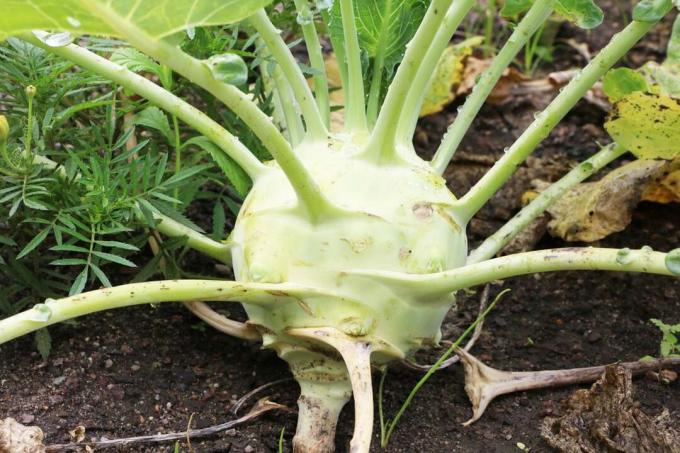
| ingredients | Attributed Effect |
|---|---|
| - Vitamin A - B vitamins - Vitamin C - calcium - magnesium - iron - selenium - phosphorus |
- reduces the risk of cardiovascular diseases - strengthens eyesight - is good for skin, nerve strength (in case of irritability), teeth and bone structure - strengthens the immune system - preventive against colds - helps with cramps - supports blood formation |
15. Cauliflower (Brassica oleracea var. botrytis)
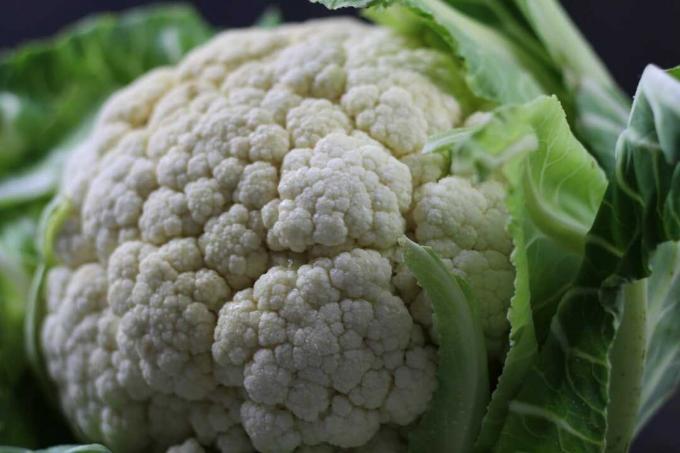
| ingredients | Attributed Effect |
|---|---|
| - Vitamin C - vitamin K - provitamin A - folic acid - calcium - potassium - magnesium - phosphorus - Mustard oils, sulforaphane, indol3-carbinol (secondary plant substances) |
- strengthens the immune system - protects against colds - ensures healthy tissue growth - is good for the heart, stomach, intestines and nerves - helps with high blood pressure and kidney and bladder problems - dehydrating |
Tip: Among the cabbage vegetables should cauliflower be the easiest to digest. Therefore it is suitable as a light food for the nutrition of sick people.
frequently asked Questions
The "bottom lights" are carrots (Daucus carota), tomatoes (Solanum lycopersicum), iceberg lettuce (Lactuca sativa var. capitata nidus tenerimma), radish (Raphanus), giant pumpkin (Cucurbita maxima) and leek (Allium porrum). The sweet potato is at the very bottom of the ranking. However, this does not mean that you should eliminate these vegetables from your diet, because they The recommendation is: A mixture of all types of vegetables, that is, the healthiest and the “most unhealthy”, is on best.
The ranking is intended to help consumers to identify “Powerhouse Fruits and Vegetables” more easily in order to ultimately eat more healthily. It should be noted that a nutrient density approach was chosen for the creation of this ranking (healthiest vegetables).
No, it is not necessary. However, you should prepare the vegetables gently so that the nutrients are retained.
